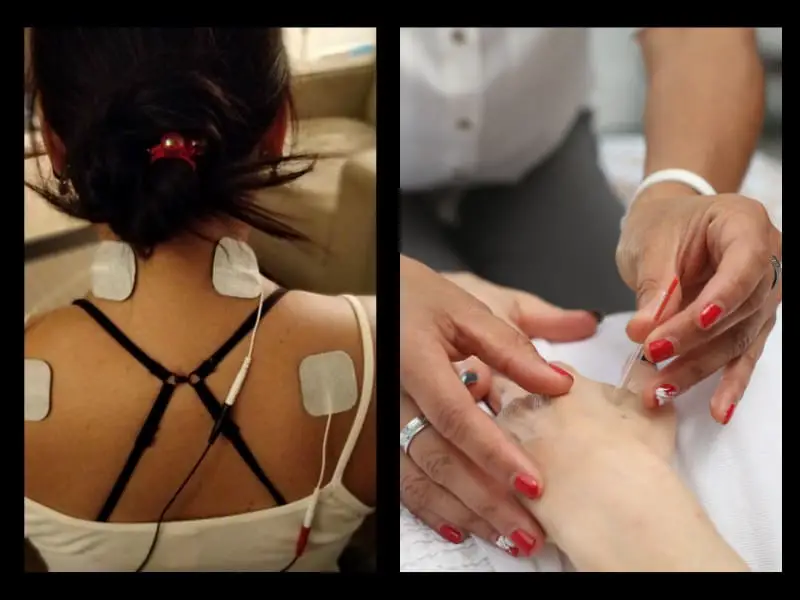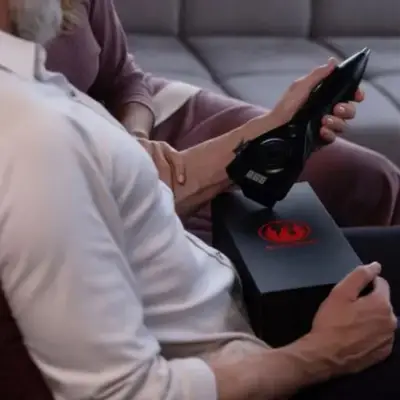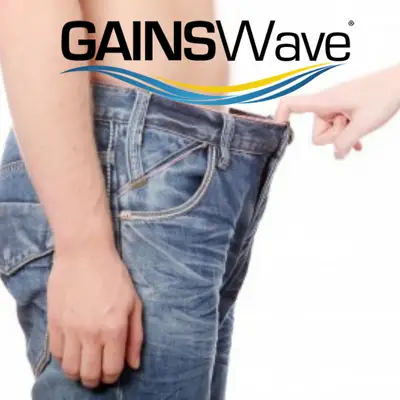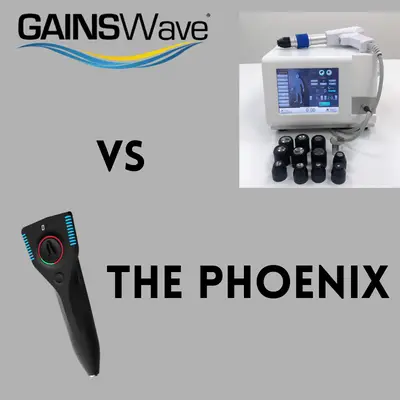If you’re asking this question, you’re probably suffering from pain, and you’re looking for an alternative to drug therapies. Both TENS and dry needling have been around for a while, and when choosing between them, it’s essential to know how they differ.
So, between TENS units vs. dry needling: what’s the difference? A TENS Unit is a device that delivers a mild electrical current to the skin, inhibiting pain signals from reaching the brain. It’s a non-invasive treatment. Dry needling is invasive, using fine needles inserted into painful knots in your muscle, which releases those knots, so relieving the pain.
| TENS | DRY NEEDLING |
| Non-invasive | Invasive |
| It’s based on the gate control theory of pain. It involves using electrical impulses to stimulate signals that prevent pain messages from reaching the brain. | It’s based on the release of blockages in muscles to restore the muscle’s natural ability to lengthen and shorten, removing knots that cause pain. |
| TENS units are widely available over-the-counter and don’t require a medical professional to operate. | Due to its invasive nature, dry needling should be carried out by someone with adequate medical training. |
| Although some people shouldn’t use TENS, there seem to be no side effects for those who can use it. | There are minor side effects from the procedure, such as bruising, bleeding, and soreness. |
But, if you’re looking for drug-free alternatives to manage pain, you’ll want more information about how they work. The problem is, research takes time and can get confusing, leaving you feeling like you need a medical degree to decipher it. Well, this article will cut through the jargon, giving you the knowledge you need to understand these treatments.
What is a TENS Unit?
In case you’re wondering, TENS is an acronym for Transcutaneous Electrical Nerve Stimulation. Transcutaneous just refers to something that’s applied through the skin. But that’s a mouthful, so let’s stick with TENS.
So, a TENS unit is a small device, usually battery-operated, with leads that attach to gel pads. You stick the pads to your body, and when the machine is switched on, it delivers a mild electrical impulse to the pads. You’ll feel a tingling on your skin from the electrical impulse.
Want to learn where to place a TENS electrode pad? Check out my guide here.
How Does it Relieve Pain?
The idea is that the electrical impulses from the TENS unit prevent pain signals from traveling via your spinal cord to your brain. Since your brain isn’t receiving pain signals, it decides that there is no pain.
Let’s delve further into this, as this is where science comes in.
It relies on the gate control theory. The theory is that there’s a gate mechanism in your spinal cord, which, when open, allows pain messages to pass through and reach your brain. However, this gate can be closed by non-pain signals, and, when closed, the gate stops pain messages getting through.
As you’ll probably know, the things you taste, smell, see, hear, or touch cause messages to be sent via your spinal cord to your brain. Think of the spinal cord as your body’s information superhighway carrying messages from various parts of your body to your brain. Your brain interprets those messages and tells your body how to respond.
So, for example, when you have an aching muscle, a pain message is sent to your brain, your brain interprets that as pain, so that’s what you feel.
The electrical impulses transmitted to your skin by TENS create a tingling sensation on your skin. As it’s not painful, a non-pain message is sent to your brain via your spinal cord.
This non-pain message closes the gate through which pain messages usually pass to your brain, so pain messages can no longer get through. As only non-pain messages are reaching your brain, that’s what it reacts to, and it tells your body that there’s no pain.
Does it Work?
Well, the outcomes of various trials conducted over time have proved inconclusive, showing effectiveness for some types of pain but not others.
However, it’s acknowledged that it’s generally safe, with no side effects and that it does work for some people and for some forms of pain. On that basis, the medical view seems to be that it’s worth trying either on its own or in combination with other types of pain control.
Who Provides TENS Treatment?
The good thing about TENS is that it’s a relatively cheap and accessible treatment because TENS units can be bought off-the-shelf from, for example, pharmacies. You don’t need any qualifications to operate one, but you should read the instructions.
There are two things to note:
- Because it may not help with all types of pain, you’d be wise to get medical advice before buying or using a TENS unit;
- Some people who shouldn’t use TENS, namely, pregnant women, people with heart disease or who have a pacemaker or metal implants, epileptics, diabetics, and people with cancer.
What is Dry Needling?
Dry needling is a procedure involving the insertion of fine short needles into painful knots formed in your muscle.
How Does it Relieve Pain?
Well, when your muscles are working correctly, the muscle fibers repeatedly shorten and lengthen back to their relaxed state during activity.
However, an injury or sudden movement or a change to your normal level of activity can cause the muscle fibers to lock in a shortened state. This tightening is your body’s natural protective mechanism to prevent further injury to the muscle.
These shortened fibers form a hardened area called a knot, an expression you’ve probably heard. You’ll no doubt have experienced this yourself, so you’ll know that a knot feels painful to touch or when you move.
Additionally, because the shortened muscle fibers compress the vessels, they restrict the supply of blood and oxygen to your muscle and block the removal of harmful acidic chemicals. Being deprived of this function prevents the muscle fibers from returning to their relaxed lengthened state.
When the dry needle is inserted into the knot, it causes bleeding in the area, bringing with it fresh supplies of oxygen and nutrients to the muscle. At the same time, this allows the trapped acidic chemicals to escape.
So, the muscle is now able to relax and lengthen again, releasing the painful knot caused by the shortened fibers.
Does it Work?
Like TENS, although there is some scientific basis for dry needling, the evidence as to its effectiveness has been inconclusive. It works for some people and for some types of pain, but not for others.
Who Provides Dry Needling Treatment?
Unlike TENS, dry needling isn’t a treatment you would administer yourself. It’s typically carried out by a physical or sports therapist. However, there’s little formal regulation of it, so, in theory, it could be offered by someone who has no medical training.
So, if you wanted to try dry needling, you’d be sensible to do some research to find someone with an appropriate medical background.
This is especially important because, due to the invasive nature of the treatment, it does carry the risk of side effects. Although these are minor — such as bruising, bleeding, and soreness — they could be exacerbated by someone who didn’t know what they were doing.
Conclusion
Hopefully, with the knowledge you’ve now gained, you’re in a better position to decide which of these two drug-free treatments might be best for you. Although there’s no conclusive evidence to support their effectiveness, they do benefit some people, so they’re considered useful tools to combat pain.
Remember, however, always consult a medical professional before undertaking any treatment.
Sources
- Wikipedia: Transcutaneous Electrical Nerve Stimulation
- Wikipedia: Dry Needling
- Medicalnewstoday: Muscle Knots: Symptoms, Causes and Treatments
- Patient.info: TENS machine: How Does a Tens Machine Work?
- Wikipedia: Spinal cord
- Pcpr.pitt.edu: Melzack-Wall.pdf
- Nhs.uk: TENS
- Lloydspharmacy: How Does a TENS Machine Work?
- Wikipedia: Muscle
- Jospt.org: Effectiveness of Dry Needling for Upper-Quarter Myofascial Pain: A Systematic Review and Meta-analysis
- Journals.physiology.org: Theories of pain: from specificity to gate control
- Verywellmind: What is Gate Control Theory?
- Nursingtimes.net: Exploring the Evidence for Using TENS to Relieve Pain
- Ncbi.nlm.nih.gov: Transcutaneous electrical nerve stimulation (TENS) versus placebo for chronic low‐back pain
- N.neurology.org: Assessment: Efficacy of transcutaneous electric nerve stimulation in the treatment of pain in neurologic disorders (an evidence-based review)
- Physioworks: What is Dry Needling?
- Wikipedia: Myofascial Trigger Point
- sbec18.org/: The Effectiveness of Dry Needling on the Reduction of Proximal Upper Quadrant Pain
- Ncbi.nlm.nih.gov: Dry Needling for Myofascial Trigger Point Pain: A Clinical Commentary





5 responses to “TENS Unit vs. Dry Needling: What’s the Difference?”
[…] can you overuse a TENS unit? You can’t get addicted to TENS as you can with other pain relief methods. However, with extended use you could grow tolerant to […]
[…] electrical currents pass from the TENS machine to your body via electrodes. Electrodes are the pads that are connected to the machine with […]
[…] how high can you set a TENS Unit? Learn more […]
[…] TENS units are used to provide short-term relief from pain by sending electrical currents through the skin. They work by stimulating nerve endings and reducing pain signals sent to the brain. […]
[…] It works by blocking out the pain signals and by activating natural pain killers in the body. With TENS, you may be able to reduce the number of painkillers you use, reduce any addiction to them, get […]